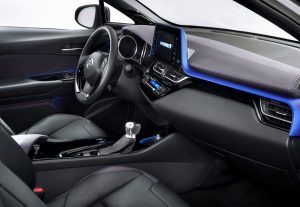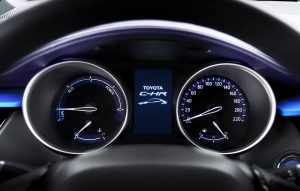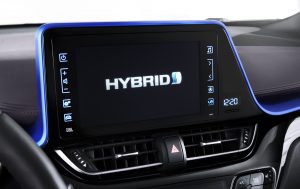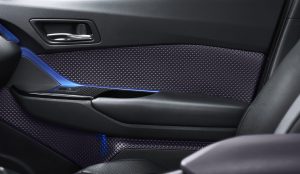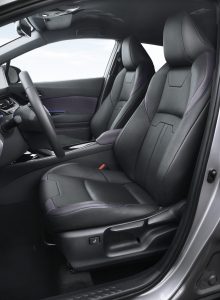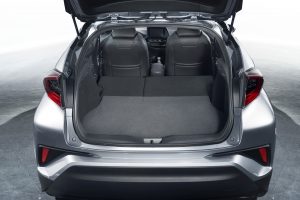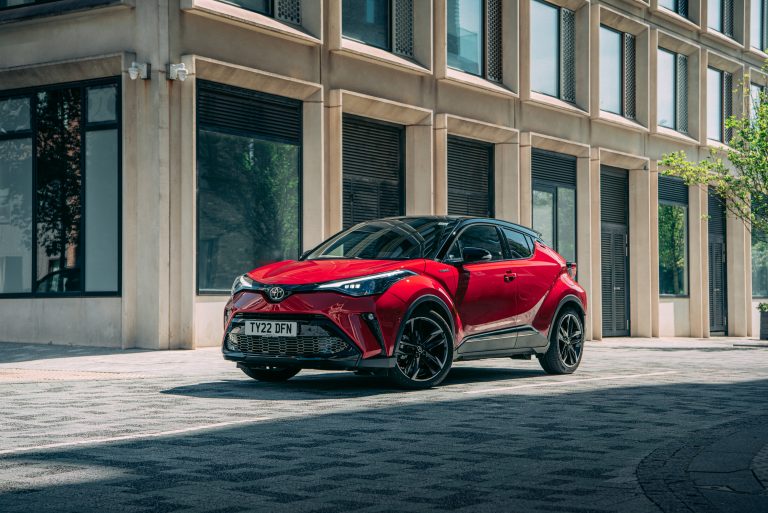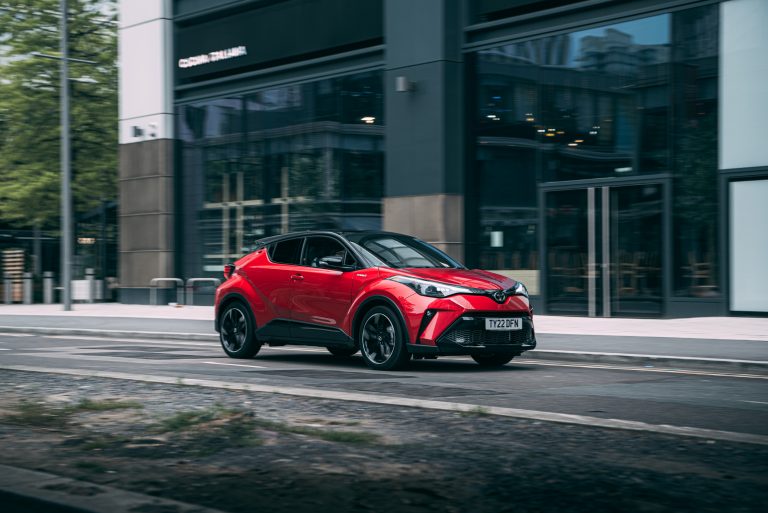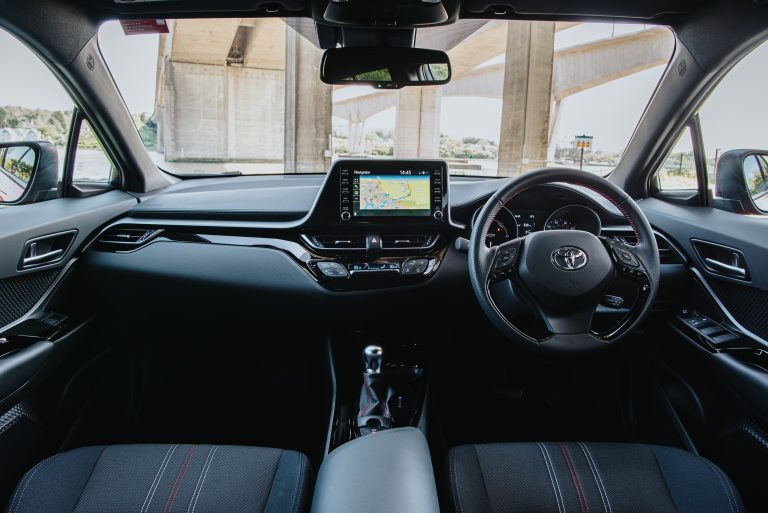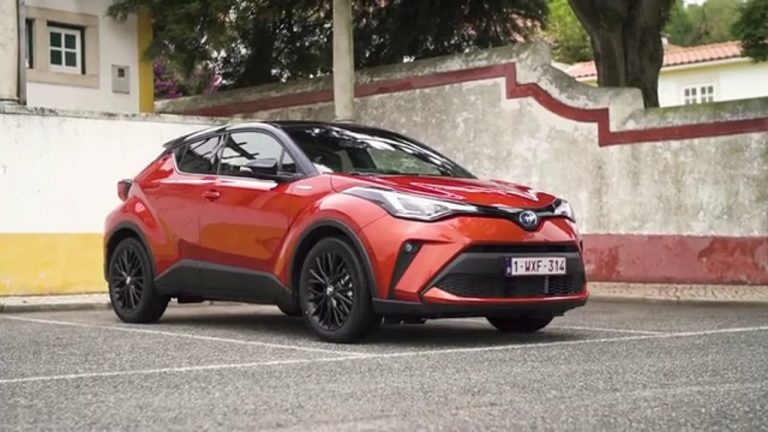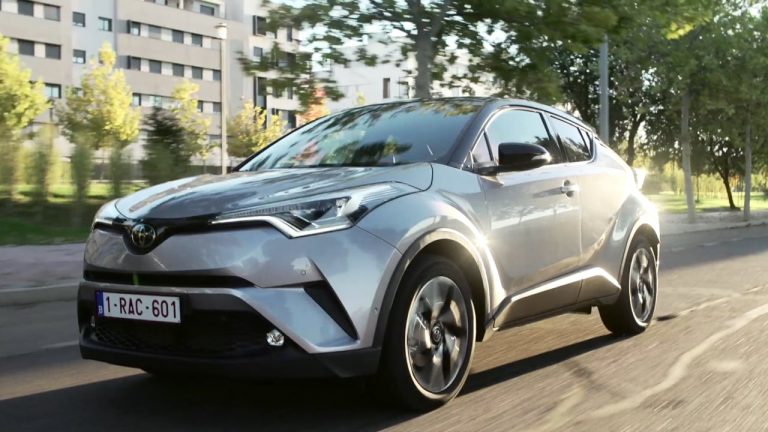The All-New Toyota C-HR
Paris motor show press information*
The all-new Toyota C-HR (that’s Coupe High-Rider), designed to stand out both within the Toyota line-up and in the crossover market, represents Akio Toyoda’s determination to allow greater stylistic freedom and promote creative engineering to deliver eye-catching designs and more driving pleasure.
It remains remarkably true to the general features seen on Toyota’s concept cars that attracted much public attention at the Paris motor show in 2014 and at the Frankfurt show the following year. Its coupe-like lines are testimony to its designers’ resolve to create a stand-out style for Toyota and establish a new direction among mid-sized crossovers.
Toyota is targeting a clear and singular customer profile, people who are predominantly driven by emotional considerations, who want individuality and seek to be the first to try new experiences and products. Style and quality are essential qualities in any purchase they make and their car serves as an extension of their personality.
Inspired by what he learned in meeting with this type of customer, Toyota C-HR Chief Engineer Hiroyuki Koba focused firmly on their requirements throughout the development process, setting high benchmarks for design and perceived quality.
The Toyota C-HR’s unique character demonstrates the flexibility that the Toyota New Global Architecture (TNGA) gives to developers in the key areas of design, powertrain and dynamics, enabling them to deliver a new, fresh take in what has become an increasingly commoditised crossover segment.
A NEW DESIGN DIRECTION FOR THE CROSSOVER SEGMENT
The Toyota C-HR’s distinctive styling brings a new dynamism and sensual quality to the crossover market in its combination of a coupe-like upper body and the powerful underpinnings of an SUV.
The car measures 4,360mm long, 1,795mm wide and (in the case of the hybrid) 1,55mm high, and has a 2,640mm wheelbase. The exterior remains remarkably faithful to the concept that was first shown in Paris in 2014, and which registered extremely well with target customers.
The model was developed under the concept “Sensual Speed Cross” and features a diamond-shape architectural theme. Prominent, projecting wheel arches at each corner emphasise the vehicle’s strength and rigidity and the modulated structure combines a power lower body and raised ground clearance with the slim, sleek cabin profile of a coupe.
Viewed from any angle, the combination of faceted, gemstone-like shapes with fluid surfaces and elegantly integrated detailing creates a delicate balance of precision and sensuality.
The front represents a further development of Toyota’s contemporary design language, with a slender upper grille flowing from the Toyota emblem into the sleek extremities of the headlamp units, then wrapping fully around the front corners.
The sense of movement in the blacked-out rocker panel towards the front and rear wheels and a shoulder axis that runs the length of the vehicle generate a fast-looking quality in the bodywork.
The coupe-like elements include disguised rear door handles, integrated into the rear pillars. The sweeping roofline projects powerfully into a rear spoiler with a skeletal frame, adding to the representation of speed in the design.
At the rear the strongly tapered cabin features a top-hinged tailgate that gives access to loadspace big enough to carry luggage for five people. This styling contrasts with the pronounced flaring of the wheel arches which gives Toyota C-HR a wide and powerful stance.
The prominent rear light clusters stand proud of the tapering bodywork – on some versions using LEDs and lightguides to create an expressive illumination signature.
Interior design
In a new departure for Toyota, Toyota C-HR’s interior follows a “Sensual Tech” design concept, combining high-tech functionality with a sensual, fashionable style. The cabin is airy and spacious, with a focused area around the driver.
The warm and welcoming feel has been supported by a layered architecture for the instrument panel, which extends into the door trim and features stylish details and a piano black panel. It creates a contrast between sensual surfacing and crisp lines to project a fresh yet comfortable feel.
The area around the driver uses innovative details and inviting high-tech features that are intuitive to use. The switchgear and the eight-inch audio display touchscreen benefit from improved HMI designs. The touchscreen to control the latest Toyota Touch 2 multimedia system is angled slightly towards the driver.
Together the asymmetric centre console, this brings all controls within easy reach of the driver, while keeping relevant switchgear accessible for the front seat passenger.
Because the touchscreen stands proud of the dashboard, rather than being enclosed by it, the upper section of the dash is considerably shallower in depth, helping secure good field of vision for the driver.
The two-tiered front seat design combines a slender, sporty upper section with a more strongly bolstered and supporting lower part. The difference between the two is emphasised by the use of different tones, textures and patterns in the upholstery.
Toyota has targeted class-leading sensory quality, aware of the fact that Toyota C-HR customers will also be considering premium brand models. To support this, it brought its European Sensory Quality team into the vehicle’s design process at the earliest stage yet.
Working closely with the designers, the SQ team has focused on component quality and consistency of grain, texture, shape, colour and illumination in every element, even down to the radii of the stitching grooves in the seats.
To reinforce the link between the interior and exterior design, many switches have a similar shape, reflecting the diamond motif of the bodyshell. The same diamond theme can be seen in the door trim pattern, the JBL audio speaker grilles, the shape of the tweeter and even the needles on the analogue instrument dials.
The choice of finishes in the cabin is crucial to achieving a consistent, one-piece look. Toyota C-HR uses a leather-like finish for all background surfaces; a smooth Nappa grail for all surfaces that are touched; and a technical grain for functional elements such as the switchgear.
Decorative parts are finished in high-quality piano black and satin silver trim. The clear blue instrument and switchgear illumination has been tuned for a consistent hue, even on adjacent reflective surfaces of differing colours.
The interior can be specified with three colour schemes: Dark Grey, Black/Blue and Black/Brown.
Equipment features
To meet the demands of its target customers, Toyota has ensured Toyota C-HR offers a wide variety of equipment features. As part of its commitment to make advanced safety equipment widely available, Toyota Safety Sense is provided as standard on all versions.
The Toyota Safety Sense package includes a Pre-Collision System with pedestrian warning, Adaptive Cruise Control, Lane Departure Alert with steering control, Automatic High Beam and Road Sign Assist.
Top level models may be specified with heated front seats, a smart entry system, rear privacy glass, bespoke upholstery (including part-leather), Simple Intelligent Park-Assist, 18-inch alloy wheels and bi-tone metallic paintwork.
State-of-the-art powertrains
Toyota C-HR’s engine range is designed to deliver exactly the kind of fluent, engaging driving behaviour its target customers are looking for. This is most powerfully witnessed in the full hybrid model, the fundamental characteristics of which guarantee a smooth ride.
The full hybrid powertrain has a maximum power output of 120bhp/90kW and produces CO2 emissions from as low as 82g/km – a figure unrivalled in its class. The combined cycle fuel consumption figures are from 78.5mpg.
Toyota has made its system lighter and more efficient, and engineered it to give sharper performance. Detailed design changes to the 1.8-litre hybrid engine have resulted in 40 per cent thermal efficiency – a world-beating level for a petrol unit. Other hybrid components have been made lighter and smaller, and have been repositioned for improved packaging, helping give the car a low centre of gravity.
The new hybrid powertrain gives a responsive and fluid drive that particularly suits Toyota C-HR’s dynamic design.
Toyota C-HR is also available with the 1.2-litre turbo petrol engine that is also featured in the Auris range. It develops 114bhp (85kW) and 185Nm, with CO2 emissions from 125g/km and combined cycle fuel consumption from 51.4mpg. It is available with a six-speed manual gearbox of CVT automatic, and front or all-wheel drive.
Selected markets (not including the UK) will additionally offer a 142bhp (107kW) 2.0-litre petrol engine with CVT.
Dynamic performance
Chief Engineer Hiroyuki Koba was closely involved in the chassis development programme for Toyota C-HR, driving thousands of miles on European roads from the outset of the project in order to understand not only the requirements of the road network, but also the way Europeans drive.
He said: “I have noticed, for example, that Europeans have a much more fluid driving style, based on a more acute observation of traffic. They avoid obstacles simply by adapting their trajectory and speed and will focus on carrying speed for efficient progress, while elsewhere in the world the preferred approach is very often to stop. This prompted us to work with our European team on driving precision in all aspects of the vehicle. We wanted performance on par with a good C-segment hatchback.”
The TNGA platform, with its low centre of gravity and multi-link rear suspension, has proved an ideal starting point from which to ensure that all the chassis features could be design to respond immediately and naturally to the driver’s actions. Koba-san has been engaged in each dynamic assessment and decision, ensuing that his vision of “response, linearity and consistency” is fully realised.
In particular, the steering has been designed to be perfectly linear, which, together with the optimum limitation of rolling motion, gives Toyota C-HR remarkable driving precision for a crossover. Limiting body movement, which affects tall cars in particular, also has a direct influence on comfort. Even on worn European roads, the car remains remarkably composed and accurate, contributing to a confident and enjoyable drive.
Concert hall sound
The Toyota C-HR can be equipped with a tailor-made JBL premium audio system, comprising an eight-channel, 576W stereo amplifier and nine speakers, including two newly-patented acoustic JBL wave guides – known as horn tweeters.
Because elements in the cabin such as the windows, sunroof and even the upholstery, as well as the rigidity of the body structure around each speaker, can have a significant impact on system sound quality, JBL and Toyota engineers worked closely together from early in the design process.
In-depth customer analysis was also taken into account, which helped determine the front cabin orientation of the speaker layout and the use of a precisely integrated horn tweeter, mounted in the front pillar – a signature JBL feature – to deliver crisp, clear sound.
As well the two 25mm horn tweeters and acoustic wave guides, the system also features two 80mm wide-dispersion units and two 17cm subwoofers in the front of the vehicle, and two 15cm full-range speakers and a 19cm subwoofer in a dedicated, 10-litre, ported enclosure in the rear.
Available in combination with Toyota C-HR’s navigation option, the audio package also incorporates lossless audio encoding.
The partnership between Toyota and JBL started in 1996 and has been successfully expanded since that time. JBL audio systems are used in major concert halls, venues and stadiums throughout the world (80 per cent of live concerts, 70 per cent of all recording studios and 90 per cent of all THX-certified cinemas).
Quality is the common focus of both companies, which has resulted in the all-new, uncompromised premium audio system that has been specifically produced for Toyota C-HR.
Provisional technical specifications*
| ENGINE | 1.2T | 1.8 HYBRID | ||
| Displacement (cc) | 1,197 | 1,798 | ||
| Max. power (bhp/kW @ rpm) | 114/85 @ 5,200 – 5,600 | 120/90 @5,200 | ||
| Max. torque (Nm @ rpm) | 185 @ 1,500 – 4,000 | 142 @ 3,600 | ||
| Transmission | 6MT FWD | CVT FWD | CVT AWD | CVT FWD |
| Fuel consumption – combined (mpg) | 51.4 to 47.9 | 48.7 | 45.6 | 78.5 to 72.4 |
| CO2 emissions – combined (g/km) | 125 to 136 | 134 to 135 | 143 to 144 | 82 to 90 |
| CHASSIS | ||||
| Suspension | ||||
| Front suspension | MacPherson strut with anti-roll bar | |||
| Rear suspension | Multilink with trailing arm, coil springs and anti-roll bar | |||
| Steering | ||||
| Type | Rack and pinion, electric power steering | |||
| Ratio | 13.6:1 | |||
| Turns lock-to-lock | 2.76 | |||
| Min. turning circle (m) | 10.4 | |||
| Brakes | ||||
| Front (diameter, mm) | Ventilated discs, 298.5 | |||
| Rear (diameter, mm) | Solid discs, 281 | |||
| Parking brake | Electric | |||
| DIMENSIONS | ||||
| Overall length (mm) | 4,360 | |||
| Overall width (mm) | 1,795 | |||
| Overall height – 1.2T/Hybrid (mm) | 1,565/1,555 | |||
| Wheelbase (mm) | 2,640 | |||
| Track – front (mm) | 1,550 (16/17in wheel)1,540 (18in wheel) | |||
| Track – rear (mm) | 1,550 (16/17in wheel)1,540 (18in wheel) | |||
| Load capacity (VDA, l) | 377 | |||
* Model specifications and performance data are for international markets; UK-specific information will be announced later.


